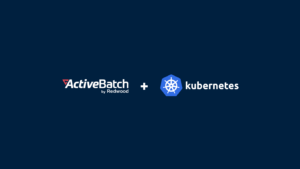A Guide to Job Scheduling Algorithms: Efficiently Managing Your Workflows
Learn about job scheduling algorithms for optimizing task execution. From FCFS to priority scheduling, find the right algorithm for your business processes.

Job scheduling algorithms enable teams to automate and optimize task scheduling and execution based on a variety of defined parameters and priorities.
What are job scheduling algorithms?
Job scheduling algorithms are performed by computer operating systems to manage and prioritize the execution of tasks, also known as jobs or processes, on a computer system. The primary goal of these algorithms is to maximize the system’s efficiency by ensuring jobs are completed on schedule.
Operating System Scheduling Algorithms
Job scheduling algorithms may also be referred to as operating system algorithms. In both cases, a process or job scheduler is used to schedule tasks to be assigned to the CPU based on the job scheduling algorithm.
Process scheduling algorithms are either non-preemptive or preemptive. With non-preemptive scheduling algorithms, once a job enters the running state, preemption is not permitted until completion time. Preemptive scheduling is based on a priority queue, giving users the ability to preempt lower priority tasks if a higher priority task enters a ready state.
There are a number of popular process scheduling algorithms teams use to optimize businesses processes:
- First Come First Served (FCFS)
- Shortest Job First (SJF)
- Round Robin Scheduling
- Priority Scheduling
- Shortest Time Remaining
First Come First Served (FCFS)
The first come first served (FCFS) algorithm executes tasks based on the job’s arrival time to the system. First come first serve is non-preemptive and implementation is based on FIFO queue. This algorithm is simple to implement but is not optimal because average wait time is high.
If a complex new job with a long execution time hits the system just before several short jobs that could have been executed in seconds, those later jobs will be forced to wait until the larger task is finished.
Shortest Job First (SJF)
Shortest job first (SJF), on the other hand, prioritizes jobs with the shortest amount of time for processing. This results in faster turnaround time for jobs, but also requires accurate estimates for processing times and job runtime to be most effective.
Shortest job first is non-preemptive and is easy to implement in batch systems that require a known CPU time. This makes it impossible to implement SJF in interactive systems where CPU time is unknown.
Round Robin Scheduling
With round robin scheduling, there is allocation of a defined time slice to each job. The sequence of jobs cycles through in a round robin fashion. This method is good for managing a large quantity of jobs but can result in lower throughput and long waiting times for some tasks.
Round robin scheduling is preemptive, and uses context switching to save states of preempted processes.
Priority Scheduling
The priority scheduling algorithm assigns each job a priority value, like high priority, highest priority, or lower priority. Jobs are then executed by priority in a priority queue. While this algorithm is good for managing jobs with obvious degrees of priority, lower jobs can get neglected.
Priority scheduling is non-preemptive and is a popular method for batch systems. Tasks with the same priority are executed on a first come first serve basis.
Shortest Time Remaining
Shortest time remaining (SRT) is a preemptive version for shortest job first. In this scheduling algorithm, processor allocation goes to the job nearest completion. Preemption is possible if a new job enters ready state and has a shorter completion time.
This method does not work for interactive systems where CPU time is unknown.
Multilevel Feedback Queue
A multilevel feedback queue makes use of existing job scheduling algorithms to group and schedule jobs with common characteristics. Multiple queues can exist and each queue can have its own scheduling algorithms with assigned priorities.
Greedy Algorithm
The greedy algorithm is an optimization method that is popular because of its simplicity. This algorithm is simple to understand and create.
A greedy algorithm comes up with a locally optimal solution by looking at all information available; it does not consider future predictions. Because this method only considers the current benefits of the proposed solution and does not explore future impacts, it is known as “greedy.”
The basic idea is to make the locally optimal choice at each step with an overall goal of finding a globally optimal solution. At each step of task execution, the algorithm chooses the best possible option available at that specific moment. It does not consider the consequences of that subset choice on future steps.
Job Scheduling with ActiveBatch
Organizations that use job scheduling algorithms can automate and orchestrate diverse real-time systems and processes with the ActiveBatch cross-platform job scheduling software.
Event-driven architecture provides advanced job scheduling features to streamline complex business processes and reduce delays through iteration. ActiveBatch Workflow Orchestration supports detailed date and time scheduling and offers a convenient drag-and-drop interface making it easy to create new jobs.
The integrated jobs library provided by ActiveBatch includes hundreds of platform-agnostic integrations. Teams can quickly build, automate, and orchestrate workflows to incorporate computer science data and dependencies from the other tools in their tech stack.
Frequently Asked Questions
There are number of algorithm techniques that can be used for job scheduling problems:
• Greedy algorithms
• Dynamic programming
• Backtracking algorithms
• Branch-and-bound algorithms
• Heuristic algorithms
Teams using Windows for job scheduling can centralize workload automation with ActiveBatch.
The choice of which job scheduling algorithm to use depends on the characteristics of the scheduling problem like number of jobs, processing times, and deadlines. Other things that should be considered include desired objectives, such as minimizing waiting times and maximizing throughput.
Learn about cron job software and how ActiveBatch offers a better architectural approach for CPU scheduling.
A preemptive scheduler is a type of scheduling solution used in computer operating systems where the scheduler can interrupt a running process and allocate the CPU to another process based on priority.
Advantages of using a preemptive scheduler include an efficient utilization of resources, better prioritization of processes, and interactive response time.
Disadvantages are present such as increased system overhead, less efficient scheduling for short jobs and processes, added complexity, and the possibility of race conditions and other synchronization issues.
Preemptive scheduling can be more complex than non-preemptive scheduling. This is because it requires more advanced algorithms and data structures to manage process scheduling.
See how teams manage critical business and IT jobs with batch scheduling using ActiveBatch.







